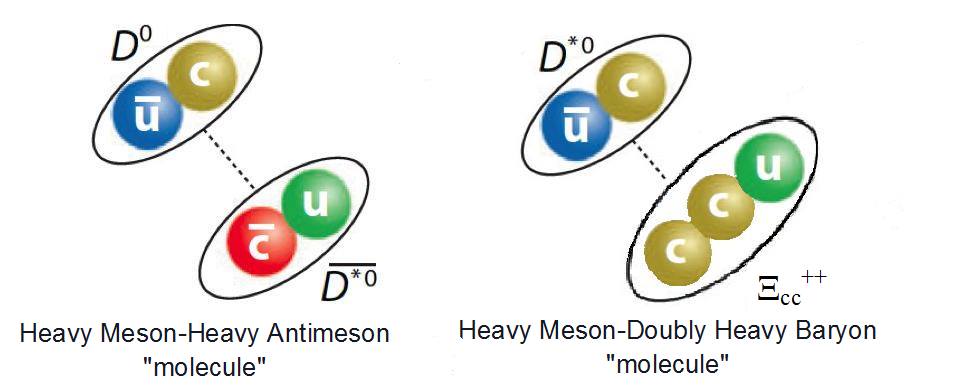Hadronic Molecules

In the last years the experimental evidence for the existence of exotic states in the charmonium and bottomonium spectra (charm or bottom quark-antiquark bound states) has steadily increased. Among all of them, the narrow X(3872), Zb(10610) and Zb(10650) resonances are of special importance, since they can be naturally described as heavy meson-heavy antimeson molecular states. These states would be very loosely bound (few hundreds of keV) and thus they would have large spatial sizes (around a few fermis).
IFIC scientists have developed an Effective Field Theory (EFT) that incorporates the spin-flavour symmetry that arises in the heavy quark limit of Quantum Chromo Dynamics, where these states are naturally described. This EFT hints to the existence of a whole family of hadronic molecular “partners” of the X(3872), Zb(10610) and Zb(10650) resonances in the charm and bottom sectors. Among them, the Zc(3900) and Zc(4025) states, recently discovered by BESIII, are predicted. Besides, incorporating an additional heavy quark symmetry that relates heavy antiquark and diquark colour sources, the EFT also predicts the possible existence of some molecular heavy meson-heavy baryon states (pentaquarks) with three heavy quarks (charm and/or bottom).
















